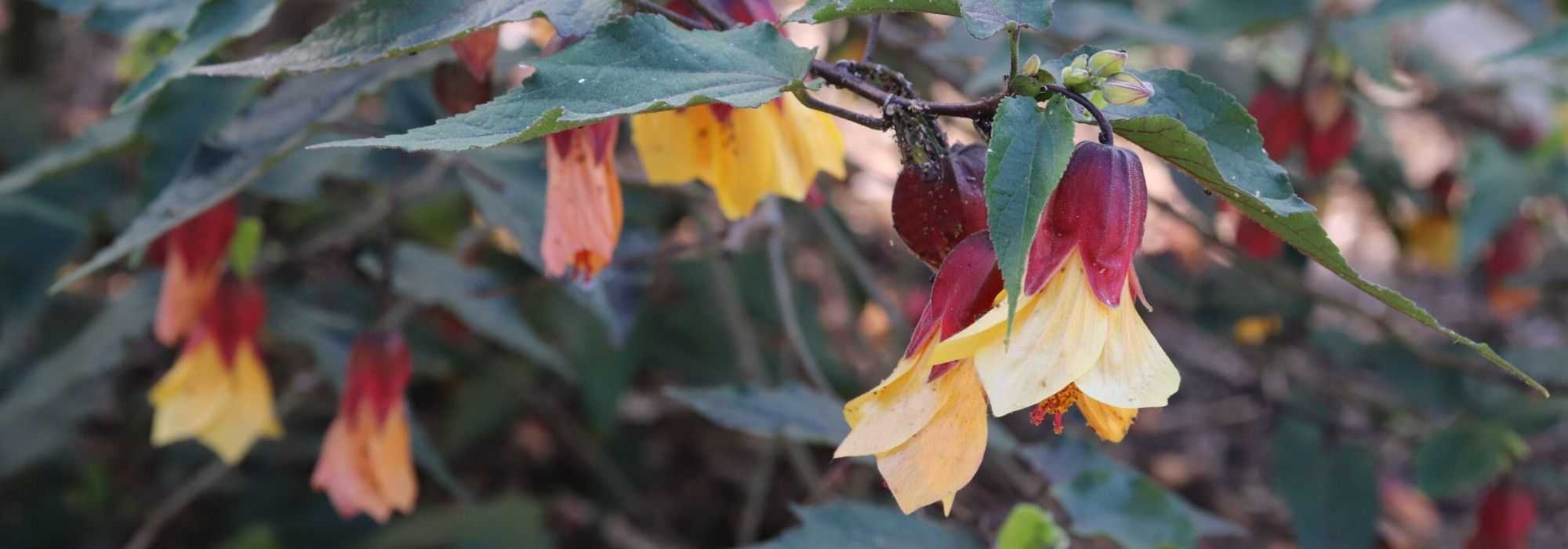
Abutilon: how to overwinter it properly
How to protect it from the cold
Contents
Abutilon is a beautiful bush with evergreen to semi-evergreen foliage depending on the climate, valued for its brightly coloured exotic flowers from spring to autumn, ranging from canary yellow to Indian pink. Native to tropical and subtropical zones of South America, this heat-loving plant is moderately hardy (from -5 to -10°C for Abutilon megapotamicum), so it should be planted outdoors in the ground only in mild climates, south of the Loire, along our country’s Atlantic seaboard and in Mediterranean regions throughout olive-growing areas. Elsewhere, grow it in a large pot and overwinter it undercover. There is no fully hardy abutilon: this tender plant copes badly with sub-zero temperatures and needs protecting in winter.
Here are our tips to protect your abutilon from the cold, whether you grow it in a pot or have planted it outdoors in the ground.
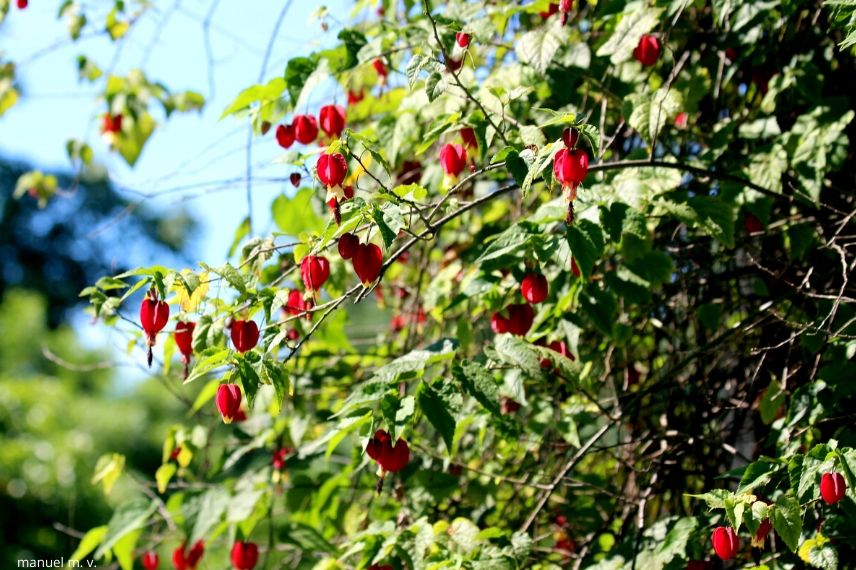
Read also
Abutilon : plant, pruning, maintainOverwintering Abutilon in pots or troughs
Abutilon is not an orangery plant: it is grown in open ground in the garden in favoured regions and in containers to be overwintered elsewhere. Aerial parts of the plant are destroyed below -5°C. In cold regions and before first autumn frosts, bring your plant indoors if you grow it in a pot. Place it in a conservatory, an unheated greenhouse, a winter garden or a frost‑free room where temperature does not fall below 8°C and does not exceed 15°C. Position the pot in a bright spot near a window and relatively cool. Reduce watering to once every 10 days and stop feeding completely during this winter period. Under cover, it can suffer attacks from red spider mites: simply mist the foliage, as they dislike humidity.
Repot every two years in spring into a slightly larger pot using a sufficiently rich substrate.
As soon as risk of frost has passed, put it back outside, acclimatising gradually, because it does not appreciate sudden temperature changes or draughts. At first, only put it outside for a few hours a day and bring it in at night before finally installing it outside on the balcony or terrace.
If you live in a mild climate where temperatures do not fall below -5°C in winter, you can leave your abutilon in its pot outside while taking a few precautions, because in a pot the roots are more exposed to cold and bad weather than in open ground. In case of forecast severe frosts, it is preferable to cover and wrap the container completely with horticultural fleece. You can also wrap the pot in cardboard secured with a thick linen cloth to insulate the roots from the cold. Move the pot to the base of a well‑exposed wall. Remember to air the above‑ground parts from time to time by temporarily removing the fleece. Remove these protections when frost is no longer a risk.
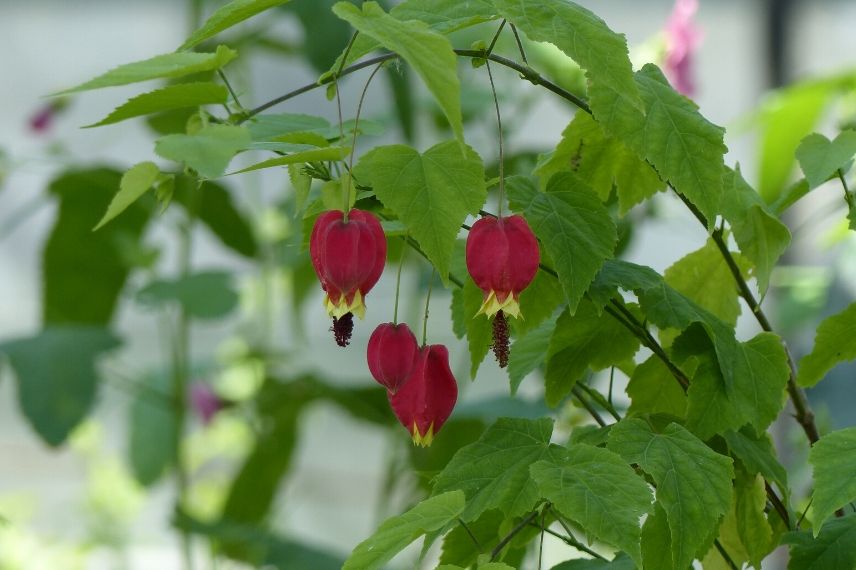
Abutilon overwintered in a cold greenhouse to protect it during winter months
Discover this bush for mild climates, with attractive foliage and a long flowering period.
Discover other Abutilon
View all →Available in 1 sizes
Available in 1 sizes
Available in 1 sizes
Available in 1 sizes
Available in 1 sizes
Available in 1 sizes
Available in 1 sizes
Available in 1 sizes
Available in 1 sizes
Available in 1 sizes
Protecting Abutilon outdoors
Not very hardy, Abutilon appreciates mild winters and sunny exposures typical of Mediterranean regions or the Atlantic coast.
It fears frost and draughts and cannot withstand low temperatures. A. megapotamicum is the hardiest (-10°C); it is also a voluble species. However, it can regrow from the stump without difficulty after brief frosts if sited in a very sheltered position, protected from icy winds that reduce its hardiness, for example against a south-facing wall. However, in most Abutilon, above-ground parts die below -5°C. If you live in an area with a fairly mild climate and a cold snap is forecast, I recommend wrapping it in horticultural fleece.
To keep its roots warm, mulch the stump with straw or dry leaves. As soon as temperatures become milder, remove the fleece.
To discover everything about this beautiful bush, see our full guide “Abutilon: planting, pruning, maintenance”
- Subscribe!
- Contents
































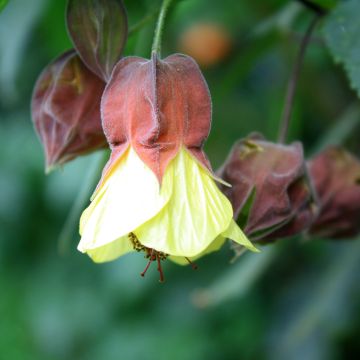

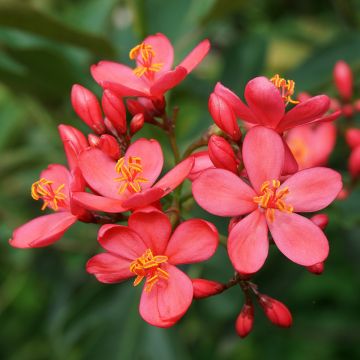

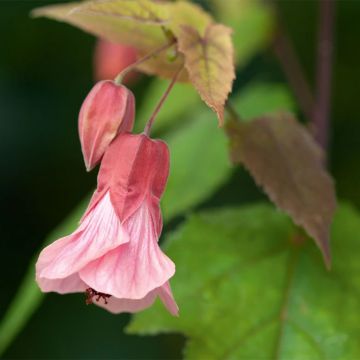
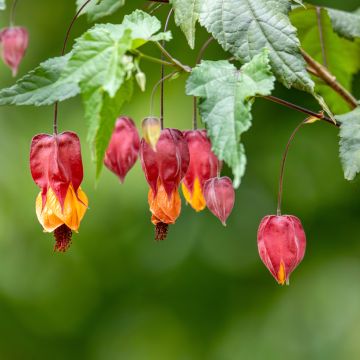
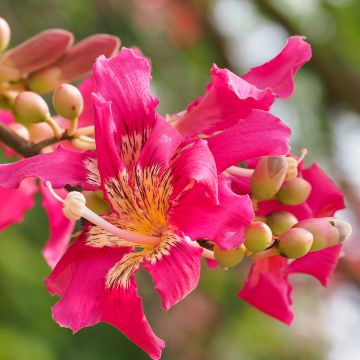
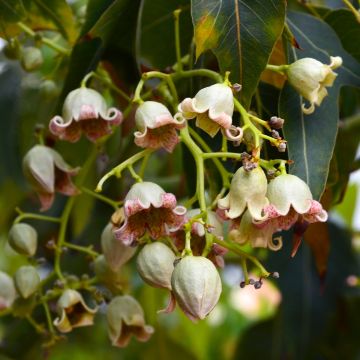
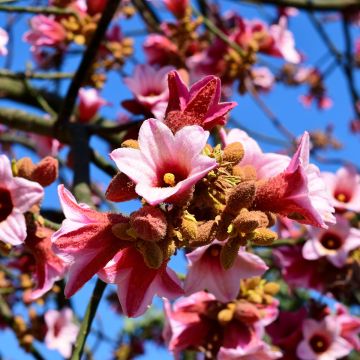
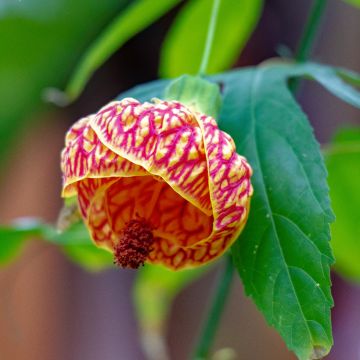
Comments